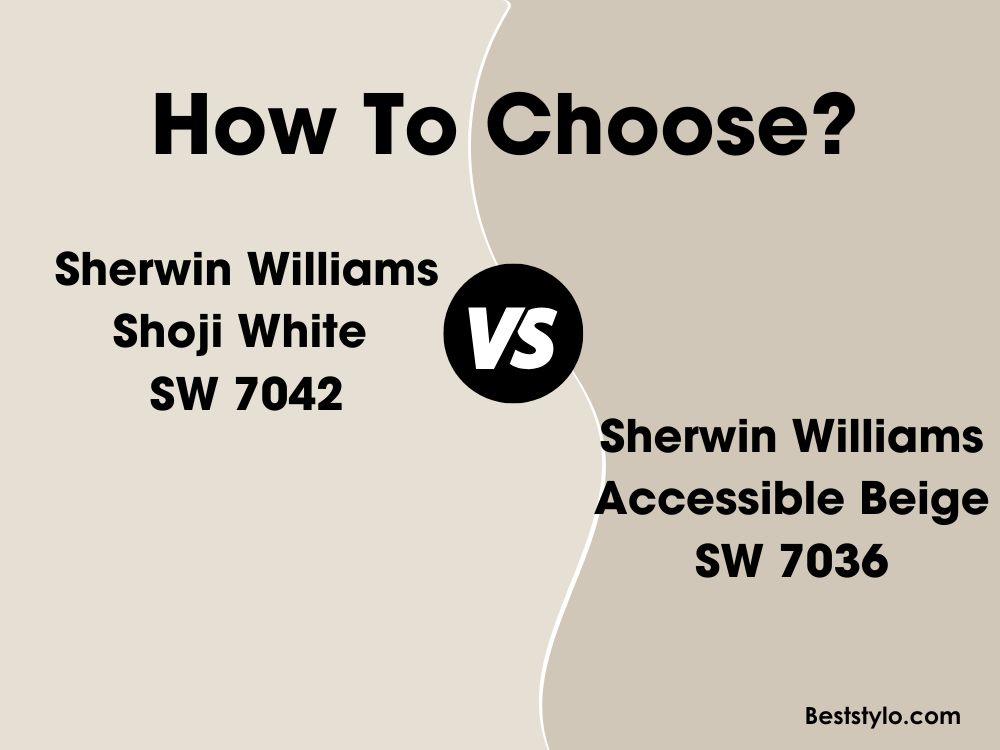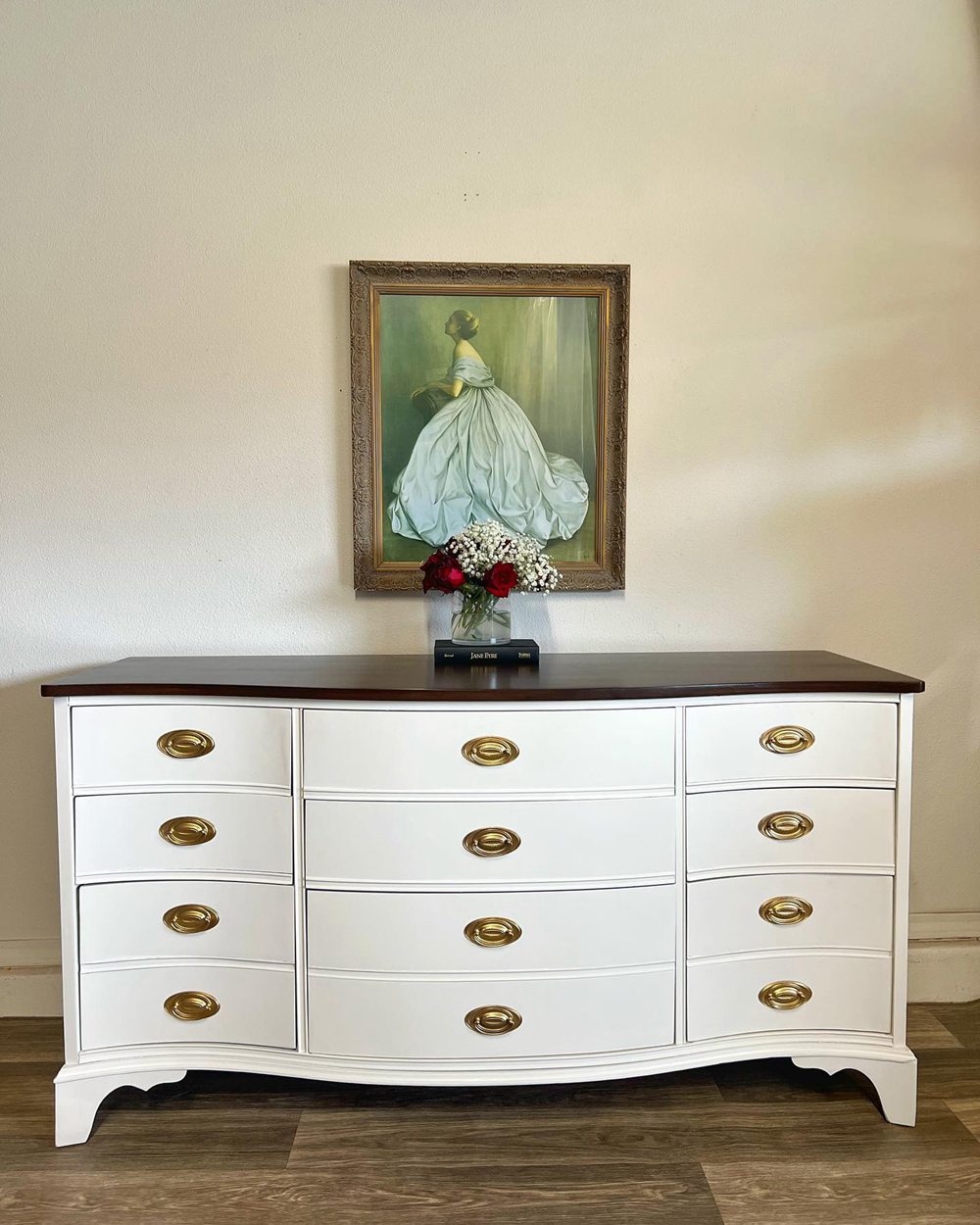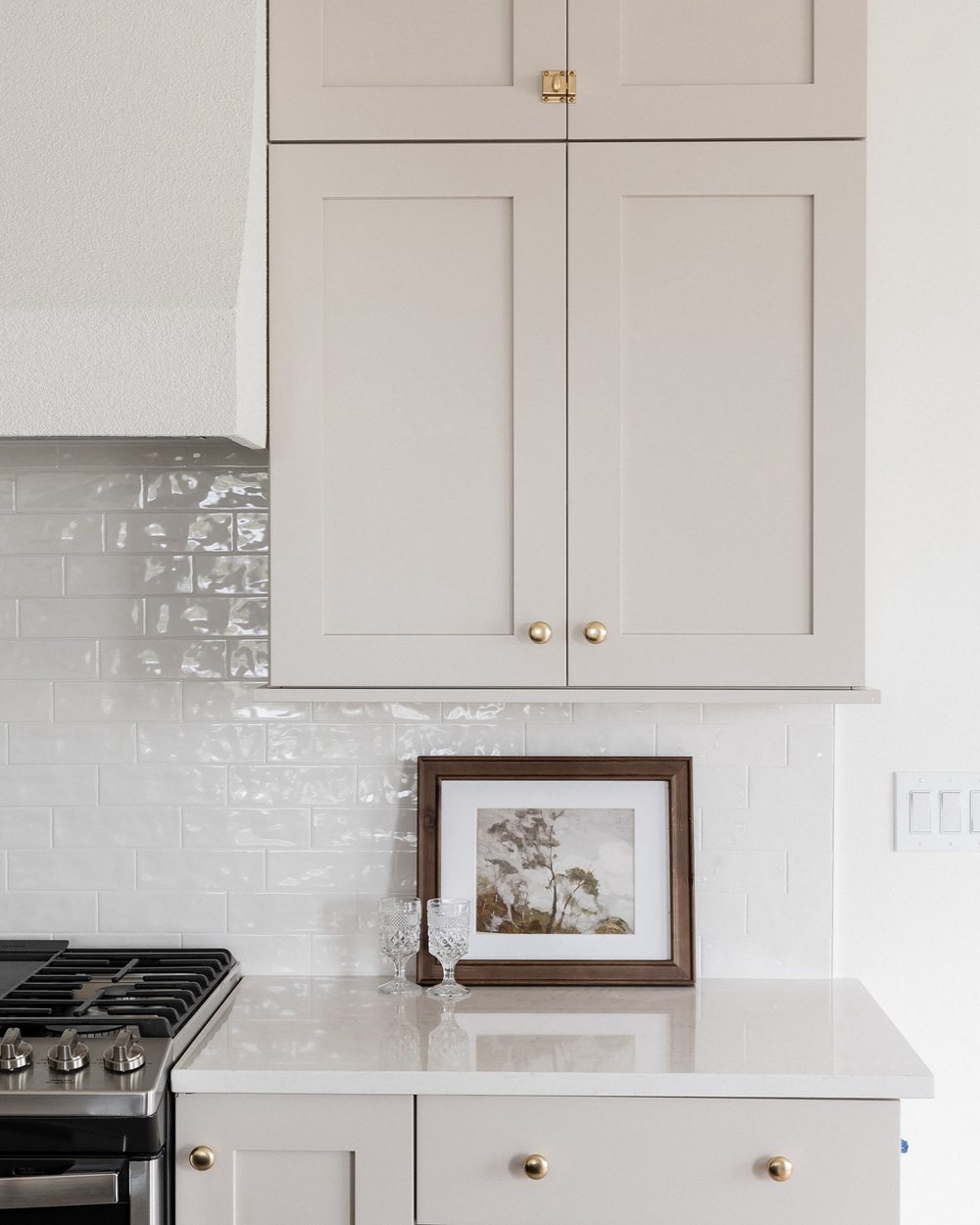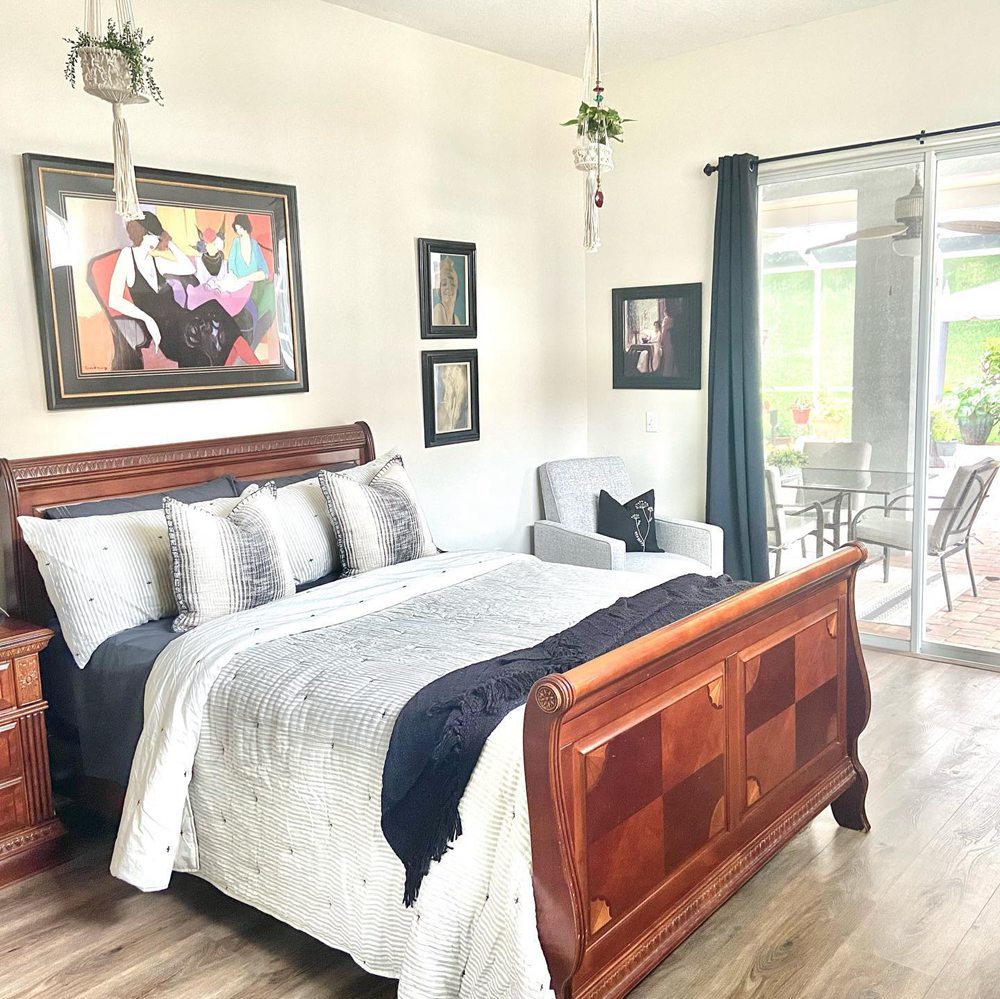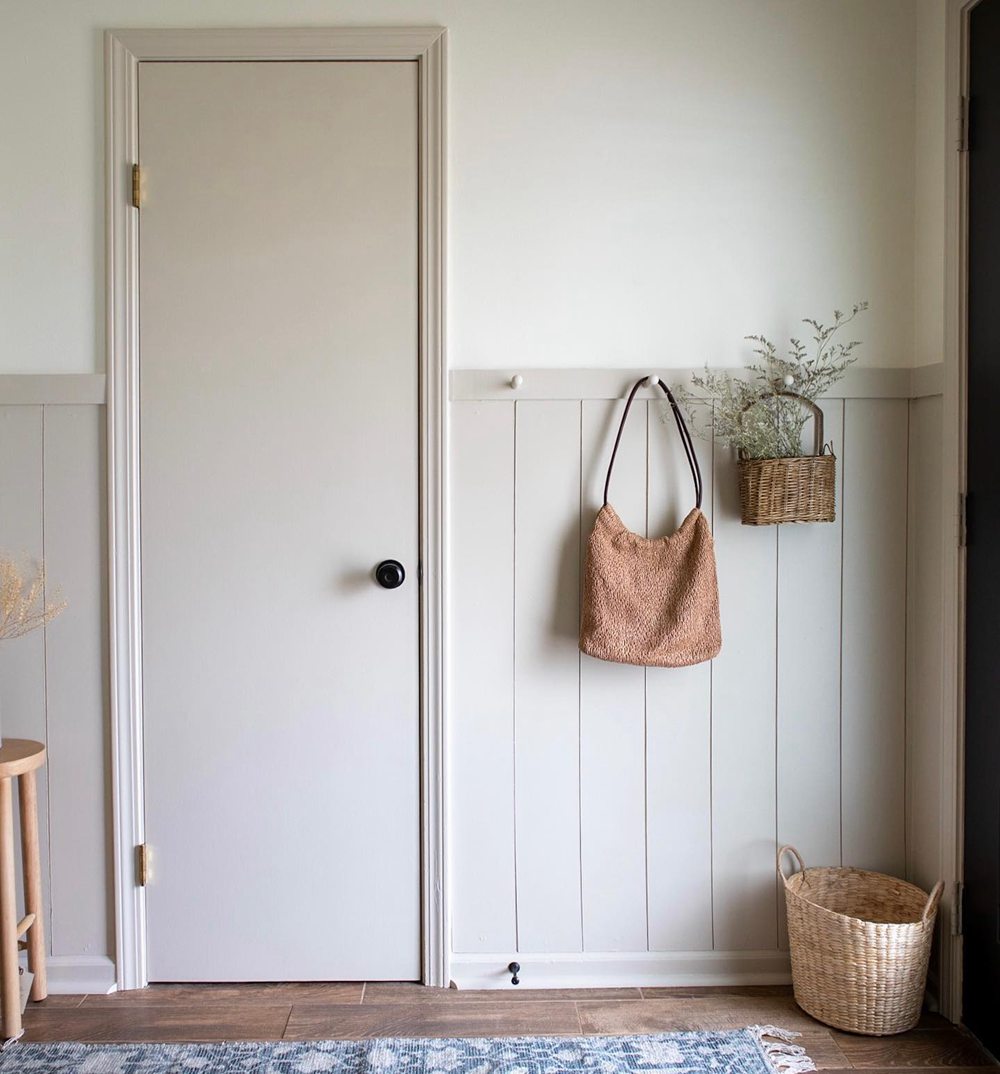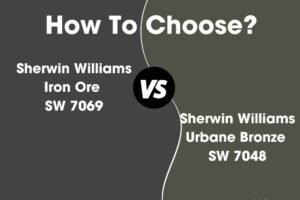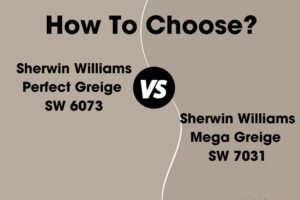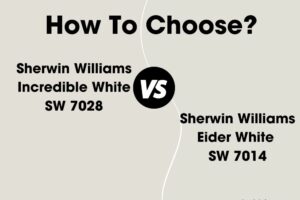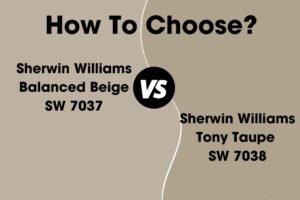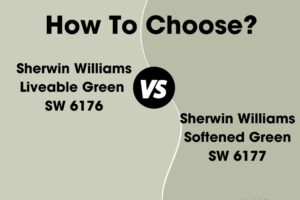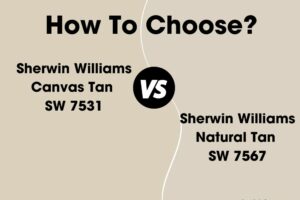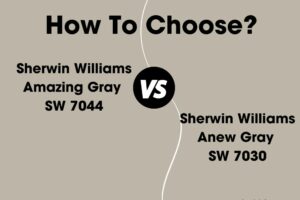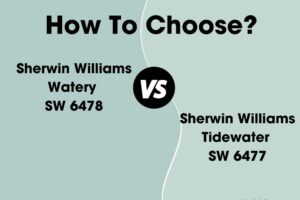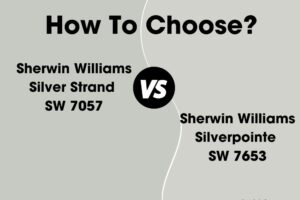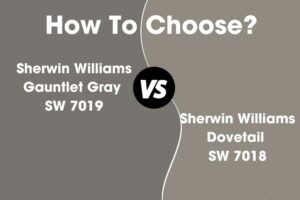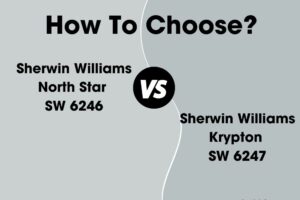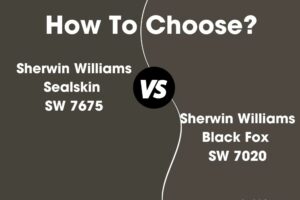When searching for the perfect neutral paint color, it’s easy to get stuck comparing two similar versatile shades from Sherwin Williams. Popular choices Shoji White SW 7042 and Accessible Beige SW 7036 appear very alike at first glance. But what really differentiates these two beautiful, subtle neutrals?
In this guide, we’ll analyze Shoji White vs Accessible Beige in-depth to help you determine the ideal neutral paint for your home. We’ll look at undertones, light reflectance, real-life photos, room pairings and more.
Let’s dive in!
Table of Contents
Key Differences Between Shoji White and Accessible Beige
Before getting into the nitty gritty, here is an overview of the main differences between Sherwin Williams’ Shoji White and Accessible Beige:
- Undertones – Shoji White is a cool white, Accessible Beige is a warm beige
- Light Reflectance – Shoji White has an LRV of 74, Accessible Beige has an LRV of 58
- Use – Shoji White suits modern styles, Accessible Beige fits traditional decor
- Rooms – Shoji White excels in bathrooms, Accessible Beige shines in bedrooms
- Availability – Both come in all sheens
Now let’s explore Shoji White and Accessible Beige more thoroughly.
Sherwin Williams Shoji White SW 7042
With its crisp, cool white appearance, Sherwin Williams Shoji White SW 7042 creates an understated backdrop well-suited for contemporary styles. This versatile neutral works across modern spaces.
Here are some details about Shoji White:
- LRV: 74
- Undertones: Cool white
- Finish: Available in all sheens
- Rooms: Bathrooms, kitchens, living rooms, offices
- Pairs Well With: Bold colors, black and white, wood tones
Shoji White is a hushed white with the slightest hint of blue undertone. In all lighting it maintains its understated neutral white appearance.
The 74 light reflectance value provides ideal illumination without being too stark. Shoji White gives an open, breathable feel.
This adaptable neutral complements a wide variety of colors from bold to muted. Popular Shoji White color pairings include:
- Sherwin Williams Naval
- Sherwin Williams High Reflective White
- Black accent pieces
- Rich wood stains and finishes
- Chrome hardware accents
While suitable anywhere at home, Shoji White truly excels in these sleek, modern spaces:
- Bathrooms
- Kitchens
- Living Rooms
- Offices
- Hallways
Shoji White’s versatility helps create a relaxing yet fresh backdrop, perfect for accentuating contemporary styles.
Sherwin Williams Accessible Beige SW 7036
With its warm beige appearance, Sherwin Williams Accessible Beige SW 7036 creates an understated backdrop well-suited for accentuating traditional decor. This versatile neutral works in both formal and casual spaces.
Here are some details about Accessible Beige:
- LRV: 58
- Undertones: Warm beige
- Finish: Available in all sheens
- Rooms: Bedrooms, living rooms, dining rooms, offices
- Pairs Well With: Wood tones, blacks, jewel tones
Accessible Beige is a soft, inviting shade with faint tan undertones. In certain lights it can read as a weathered clay. The welcoming neutral has natural appeal.
The 58 light reflectance value prevents the shade from feeling too dark while still remaining cozy. Accessible Beige strikes a comfortable balance suitable for most rooms.
This versatile neutral complements both cool and warm accents nicely. Popular Accessible Beige color pairings include:
- Sherwin Williams Pure White
- Black accent pieces
- Rich wood finishes
- Brass hardware accents
While suitable anywhere at home, Accessible Beige truly excels in these spaces:
- Bedrooms
- Living Rooms
- Dining Rooms
- Offices
- Libraries
Accessible Beige’s warmth helps create a welcoming, traditional feel perfect as an all-over home color. Use it to allow bold colors to stand out.
Comparing Shoji White vs Accessible Beige
Now that we’ve examined Shoji White and Accessible Beige independently, let’s directly compare them:
Light Reflectance
Shoji White and Accessible Beige have different LRVs of 74 and 58 respectively. Shoji White will appear much brighter.
Undertones
Here’s where the main difference lies. Shoji White is a cool white, while Accessible Beige is a warm beige-influenced neutral.
Use & Rooms
Shoji White’s coolness excels in modern baths and kitchens. Accessible Beige’s warmth is perfect for cozy bedrooms.
Availability
Both Shoji White and Accessible Beige come in any sheen from matte to high gloss.
Shoji White vs Accessible Beige Comparison Chart
| Paint Color | Shoji White SW 7042 | Accessible Beige SW 7036 |
|---|---|---|
| LRV | 74 | 58 |
| Undertones | Cool white | Warm beige |
| Use | Contemporary styles | Traditional decor |
| Rooms | Bathrooms, kitchens, living rooms | Bedrooms, living rooms, dining rooms |
| Finishes | All sheens | All sheens |
| Style | Modern | Traditional |
Real-Life Photos: Shoji White vs Accessible Beige
Let’s look at real-life photos to better visualize the differences between Shoji White and Accessible Beige:
Sherwin Williams Shoji White
Sherwin Williams Accessible Beige
While they can overlap, Shoji White generally appears crisper and cooler than the warm beige tone of Accessible Beige. But lighting affects their look.
Should I Choose Shoji White or Accessible Beige?
So how do you decide between Sherwin Williams’ Shoji White or Accessible Beige for your home? Here are a few tips:
Choose Shoji White SW 7042 if you want:
- A cool, crisp neutral white
- A versatile color suitable for modern spaces
- An airy feel for kitchens and bathrooms
- To allow accent colors to pop
Choose Accessible Beige SW 7036 if you want:
- A warm, beige-influenced neutral
- A cozy yet sophisticated neutral for bedrooms
- A versatile color that works with traditional decor
- A soft, welcoming backdrop
Get samples of both Shoji White and Accessible Beige. Paint large sections on your walls viewing at different times of day. This gives you the best sense of how the undertones read in your environment.
You can also pair them with decor you already have to visualize the look. Both offer beautiful neutral tones that suit varied styles.
Ideal Room Pairings
Here are some rooms that are especially well-suited to Shoji White and Accessible Beige paint colors:
Sherwin Williams Shoji White
- Bathrooms
- Kitchens
- Living Rooms
- Offices
- Hallways
Sherwin Williams Accessible Beige
- Bedrooms
- Living Rooms
- Dining Rooms
- Offices
- Libraries
While both neutrals work well throughout the home, the above applications make optimal use of their unique strengths.
Decorating Ideas and Color Pairings
On their own, Shoji White and Accessible Beige create peaceful backdrops. Complement them with other colors and materials for gorgeous spaces:
Shoji White SW 7042 Pairings
- Sherwin Williams Naval
- Sherwin Williams High Reflective White
- Black accent pieces
- Rich wood stains and finishes
- Chrome hardware accents
Accessible Beige SW 7036 Pairings
- Sherwin Williams Pure White
- Black accent pieces
- Rich wood finishes
- Brass hardware accents
Shoji White vs Accessible Beige – Which is Better?
So which neutral paint color is better for your home – Shoji White or Accessible Beige?
Consider Shoji White SW 7042 if you want:
- A cool, crisp neutral white
- A versatile color suitable for modern spaces
- An airy feel for kitchens and bathrooms
- To allow accent colors to pop
Consider Accessible Beige SW 7036 if you want:
- A warm, beige-influenced neutral
- A cozy yet sophisticated neutral for bedrooms
- A versatile color that works with traditional decor
- A soft, welcoming backdrop
While Shoji White offers modern crispness, Accessible Beige provides subtle traditional warmth.
Get samples before deciding. Either beautiful Sherwin Williams neutral you choose will suit your home perfectly.
Frequently Asked Questions
What are the main differences between Shoji White and Accessible Beige?
The main differences are their undertones and suitability for varied spaces. Shoji White is a cool, crisp neutral while Accessible Beige is a warm, cozy beige.
What colors complement Shoji White?
Shoji White looks beautiful paired with deeper grays, black accents, chrome metallics, and natural wood tones for contrast. Avoid pairing it with warm tones.
Can you use Accessible Beige in a bedroom?
Yes, Accessible Beige’s subtle warmth would work wonderfully in a bedroom paired with wood furniture and jewel tone accents for a cozy feel.
Is Shoji White suitable for southern exposure?
Yes, with an LRV of 74 Shoji White is light enough for a south facing room without being too stark. Its cool undertone keeps it airy.
Does Accessible Beige come in eggshell finish?
Yes, Accessible Beige is extremely versatile and comes in any sheen from flat matte to eggshell to high gloss semi-gloss.


